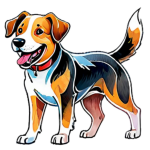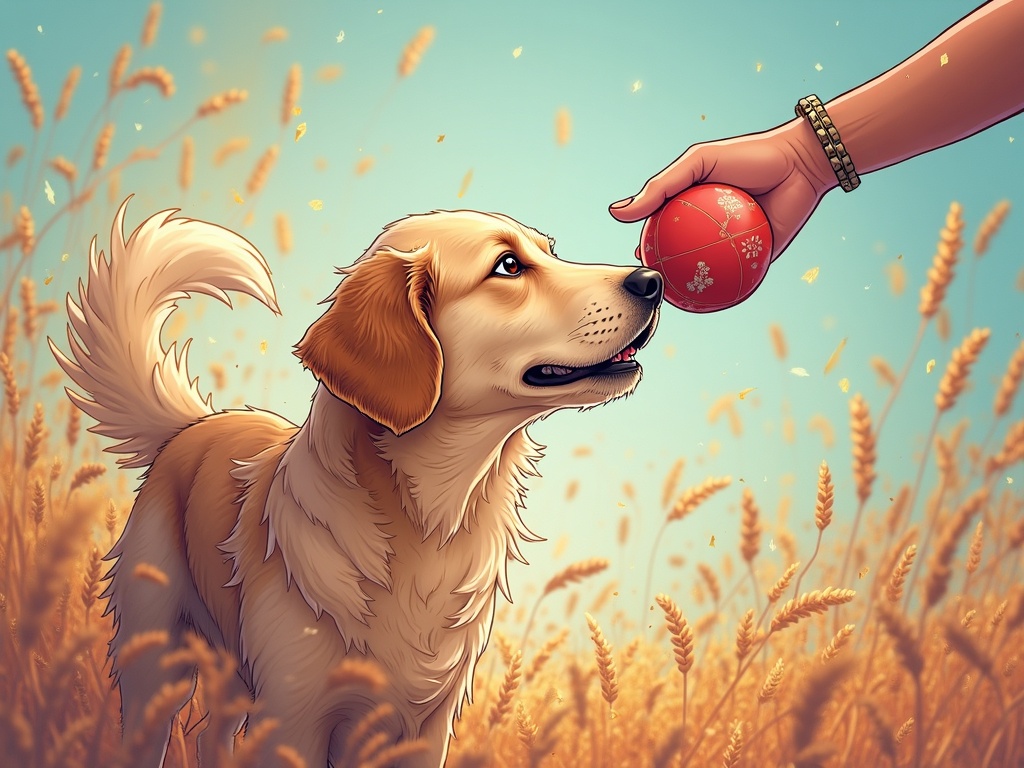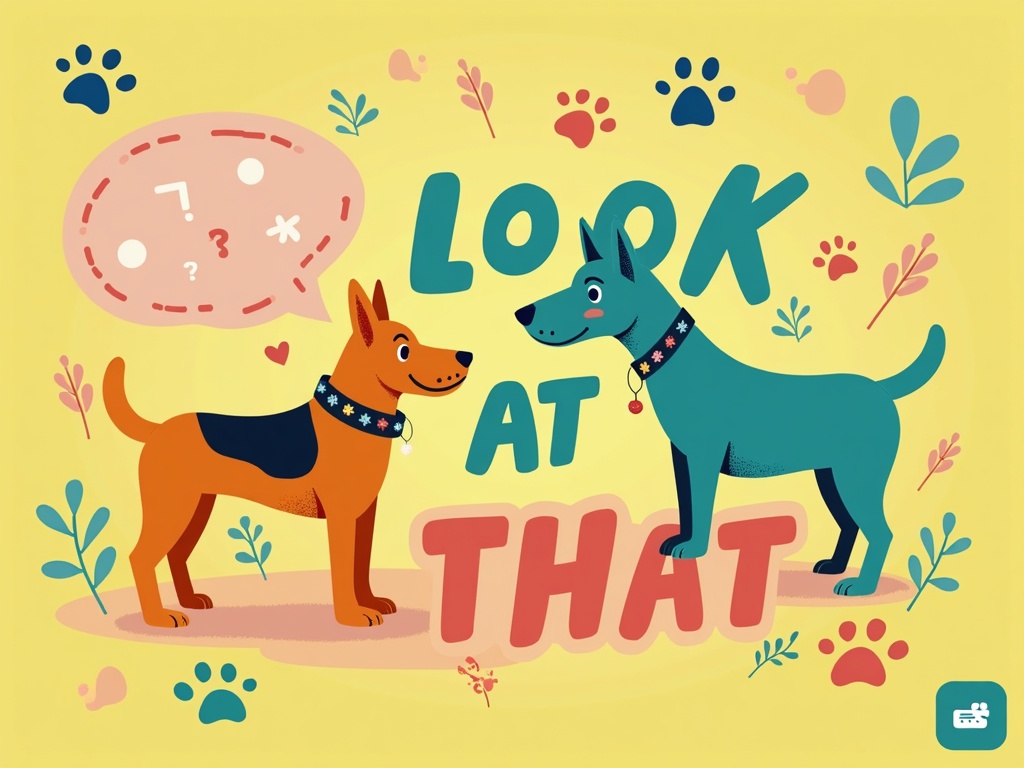Unlocking Reactivity: Mastering The ‘Look At That' Game for a Calm and Confident Dog
Imagine strolling through your neighborhood, the sun on your face, your dog trotting happily beside you. Suddenly, a squirrel darts across your path. Instead of lunging, barking, and creating a scene, your dog calmly glances at the squirrel, then back at you, eager for praise. This idyllic scenario isn't just a dream. It's achievable through consistent, positive training, and The ‘Look At That' Game is your secret weapon.
What is Reactivity in Dogs?
Reactivity in dogs refers to exaggerated responses to specific stimuli. These triggers can be other dogs, people, cars, bikes, or pretty much anything in their environment. Reactive dogs typically display behaviors like barking, lunging, growling, or excessive pulling on the leash. This isn't necessarily aggression; often, it stems from fear, anxiety, frustration, or overexcitement.
Understanding the root cause of your dog's reactivity is crucial. Is it fear-based, stemming from a lack of socialization? Is it frustration, born from pent-up energy and a desire to engage with the environment? Or is it excitement, a display of uncontrolled enthusiasm? Identifying the underlying emotion will inform your training approach and help you tailor The ‘Look At That' Game to your dog's specific needs.
Why The ‘Look At That' Game Works
The ‘Look At That' Game, often abbreviated as LAT, is a powerful counter-conditioning and desensitization technique. It works by changing your dog's emotional response to triggers. Instead of associating the trigger with anxiety or frustration, they learn to associate it with something positive: you and a tasty reward.
Here's the core principle: when your dog sees a trigger, *beforethey react, you mark the behavior (typically with a verbal cue like Yes!) and reward them. This creates a new association: trigger = look at owner = good things happen. Over time, the trigger itself becomes a predictor of positive reinforcement, reducing the reactive response.
Getting Started with The ‘Look At That' Game
Before you even step outside, there are a few crucial preparations:
**High-Value Treats:Forget the dry kibble. You need something your dog *reallyloves. Think small pieces of cooked chicken, cheese, hot dogs, or whatever motivates them most.
**A Quiet Environment:Begin in a controlled setting with minimal distractions. Your living room or backyard are ideal starting points.
**A Marker Cue:Choose a word or sound to signal to your dog that they've done something right. Yes! or a clicker are common choices. Consistency is key.
**Leash Training Foundation:Your dog should be comfortable wearing a leash and collar or harness without pulling excessively. This isn't about perfect heeling; it's about basic control.
Step-by-Step Guide to Playing LAT
1. **Introduce the Marker:Pair your marker cue (Yes!) with a treat. Say Yes! then immediately give your dog a treat. Repeat this several times until your dog understands the connection between the sound and the reward.
2. **Find a Low-Level Trigger:In your controlled environment, introduce a low-intensity trigger. This could be a toy slightly out of reach, a person standing still across the room, or even just a slightly ajar door.
3. **Observe and Reward:The *instantyour dog looks at the trigger, say Yes! and give them a treat. The timing is critical. You want to reward the *look*, not the reaction that might follow.
4. **Repeat and Gradually Increase Intensity:Repeat step 3 several times, then slightly increase the intensity of the trigger. Move the toy a little closer, have the person take a small step, or open the door a bit wider.
5. **Generalize to New Environments:Once your dog is consistently looking at the trigger and then at you in your controlled environment, start practicing in new locations with slightly more distractions.
Troubleshooting Common LAT Challenges
Even with careful planning, you might encounter some challenges. Here are a few common issues and how to address them:
**Dog Reacts Before You Can Mark:If your dog is reacting before you can say Yes!, you're likely starting with a trigger that's too intense. Reduce the intensity by moving further away from the trigger or choosing a less stimulating one.
**Dog Loses Interest in Treats:Your treats might not be high-value enough, or your dog might be too stressed to eat. Try different treats or move to a less stimulating environment. Shorten your training sessions to keep your dog engaged. Make sure you are enthusiastic!
**Inconsistent Responses:Ensure you are marking the behavior (the *look*) consistently. Inconsistent marking can confuse your dog and slow down the learning process. Enlist the help of a friend or family member to practice and provide feedback on your timing.
**Plateauing:If your dog stops progressing, try introducing novel triggers or varying the reinforcement schedule. Instead of rewarding every look, occasionally reward with extra-delicious treats or a favorite game.
Taking The ‘Look At That' Game on the Road
Once your dog is making consistent progress in controlled environments, it's time to generalize the training to the real world. This requires careful planning and a gradual approach.
**Start Slow:Choose quiet locations with minimal distractions. Parks early in the morning or late in the evening are good options.
**Manage the Environment:Use distance to your advantage. Keep your dog far enough away from potential triggers that they remain under threshold – meaning, they notice the trigger but don't react.
**Be Prepared to Retreat:If your dog starts to react, calmly move further away from the trigger. Don't punish or scold them; simply acknowledge that the situation was too challenging and try again later with a less intense trigger.
**Vary Your Rewards:Keep your dog engaged by varying your rewards. Use a combination of high-value treats, praise, and even short play sessions.
**Focus on Progress, Not Perfection:Reactivity training is a marathon, not a sprint. There will be good days and bad days. Celebrate your dog's successes and don't get discouraged by setbacks.
Advanced LAT Techniques
As your dog progresses, you can introduce more advanced techniques to further refine their reactivity.
**Adding Duration:Once your dog is reliably looking at triggers and then at you, start increasing the duration of the look. Ask them to hold their gaze on you for a few seconds before rewarding.
**Introducing Movement:Gradually introduce movement into the training. Have the trigger (e.g., a person or another dog) walk past at a distance while you and your dog practice LAT.
**Combining with Other Cues:Integrate LAT with other training cues, such as leave it or find it. This can help your dog generalize their training to a wider range of situations.
Beyond the Game: Comprehensive Reactivity Management
While The ‘Look At That' Game is a powerful tool, it's just one piece of the puzzle when it comes to managing reactivity. A comprehensive approach includes:
**Environmental Management:Minimize exposure to triggers whenever possible. This might involve walking your dog at off-peak hours, avoiding certain areas, or using visual barriers in your home.
**Enrichment and Exercise:Provide your dog with plenty of physical and mental stimulation. A tired dog is less likely to react. Consider activities like puzzle toys, trick training, or scent work.
**Addressing Underlying Anxiety:If your dog's reactivity stems from anxiety, consider seeking professional help from a veterinarian or certified behaviorist. They may recommend medication or other interventions to help manage your dog's anxiety levels.
**Consistent Training:Reactivity training requires ongoing effort and consistency. Make The ‘Look At That' Game a regular part of your training routine to maintain your dog's progress.
The Rewards of Patience and Persistence
Training a reactive dog requires patience, persistence, and a deep understanding of your canine companion. While there may be frustrating moments, the rewards are immeasurable. Not only will you improve your dog's quality of life, but you'll also strengthen your bond and create a more harmonious relationship. Imagine the peace of mind knowing you can confidently navigate the world with your dog by your side, knowing they can handle whatever comes their way.
The ‘Look At That' Game is more than just a training technique; it's a pathway to a calmer, happier, and more confident dog. By consistently applying the principles of positive reinforcement and understanding your dog's individual needs, you can unlock their potential and transform reactivity into resilience. And remember to celebrate every small victory along the way! With dedication and a little bit of look at that magic, you and your dog can conquer reactivity together. Remember to be patient, and that positive reinforcement goes a long way!


